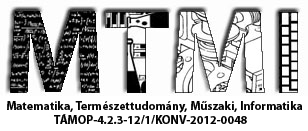Immunohystomchemical analysis of hyaluronan homeostasis in the articular cartilage of PACAP KO mice
Abstract data
Pituitary adenylate cyclase activating polypeptide (PACAP) is an important neurotrophic factor influencing differentiation of neuronal elements and exerting protecting role during traumatic injuries or inflammatory processes of the central nervous system (CNS). Although increasing evidence is available on its presence and protecting function in various peripheral tissues, little is known about the role of PACAP in joint formation.
The aim of our project was to determine the presence and point out the expressional differences of Hyaluronic acid (HA), and its synthases (HAS2, HAS3) or receptors (CD44, RHAMM) in articular cartilage of PACAP Knock Out and Wild Type (WT) mice. We used dimethylmethylen blue staining for judgement of possible morphological differences of articular cartilage and performed immunohistochemical reactions for investigation of localisation and/or expression differences in molecular components of HA homeostasis. Sever morphological alterations were detected in articular cartilage with enthickening, appearing non-metachromatic areas and ligament like structures on the articular surface. HA, one of the major extracellular components of hyaline cartilage, showed a stronger accumulation in articular cartilage of knee joint obtained from PACAP-KO mice compared to WT samples. HAS2 was weakly detected in WT mice but appeared readly in KO mice. Expression of HAS3 was strong in both types, but of greater quantities in hypertrophic cells of KO murines. RHAMM was hardly detected in WT mice but pronounced expression appeared in KO animals. CD44 was detected in both groups with an elevated signal in hypertrophic zone of articular cartilage in KO animal.
Based on our data we can presume that besides important functions of PACAP in CNS, it also has an effect on the formation of articular cartilage. One of the factors which may cause the abnormal articular cartilage morphology can be an altered HA metabolism and consequent HA-accumulation in case of the lack of PACAP-signalling.
Támogatók: Támogatók: Az NTP-TDK-14-0007 számú, A Debreceni Egyetem ÁOK TDK tevékenység népszerűsítése helyi konferencia keretében, az NTP-TDK-14-0006 számú, A Debreceni Egyetem Népegészségügyi Karán folyó Tudományos Diákköri kutatások támogatása, NTP-HHTDK-15-0011-es A Debreceni Egyetem ÁOK TDK tevékenység népszerűsítése 2016. évi helyi konferencia keretében, valamint a NTP-HHTDK-15-0057-es számú, A Debreceni Egyetem Népegészségügyi Karán folyó Tudományos Diákköri kutatások támogatása című pályázatokhoz kapcsolódóan az Emberi Erőforrás Támogatáskezelő, az Emberi Erőforrások Minisztériuma, az Oktatáskutató és Fejlesztő Intézet és a Nemzeti Tehetség Program



